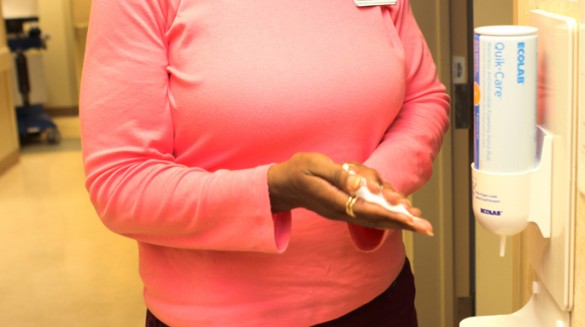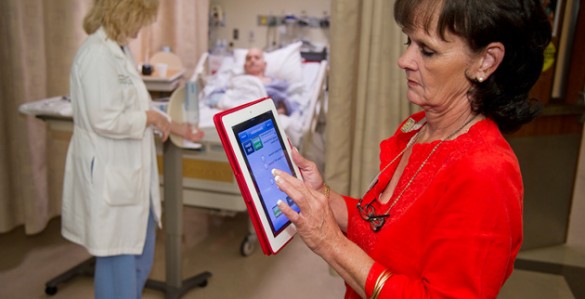
Dramatic reductions in infection rates throughout Vanderbilt’s inpatient care units are strongly associated with gains in hand hygiene compliance, according to Chief Hospital Epidemiologist Tom Talbot, M.D., MPH, associate professor of Preventive Medicine.
“Through the years we have done this we have kept careful statistics. In the months we have higher compliance in hand washing, we have fewer infections — period. I cannot tell you it’s the only cause and effect because there are a lot of things we’re trying, but I think this shows clearly we are making a difference for our patients in a positive way,” Talbot said.
From 2007 through 2012, Talbot’s office has tracked Medical Center-wide rates of hand hygiene compliance as well as rates of infections that can be directly affected by hand hygiene, like device- or catheter-related infections, or ventilator-associated pneumonias. New data shows a long-term and clear inverse association: The better the rate of hand washing, the lower the rate of infection.
And patients are noticing. Brenda Chapman is an infection control nurse at Maury Regional Hospital. But last October hand washing was the last thing she wanted to have on her mind as her husband came to Vanderbilt for minimally invasive surgery to remove a cancerous kidney.
“In the back of my mind I know all the things that can go wrong, but I was trying not to think about that; I was trying to keep a positive attitude and hope for the best. The first thing I noticed was the hand hygiene stations everywhere. They truly did use soap and water or hand gel, and they did that in our presence. I didn’t have to worry about protecting him,” Chapman said.
Talbot says the culture has truly changed. When a unit sees its hand washing rates drop or infection numbers rise, it is proactive and positive about re-energizing staff behind behaviors that can improve hand hygiene compliance.
“The bar has risen over the years. As part of our new pillar goal, we have set an expectation of 92 percent compliance for the whole Medical Center,” Talbot said.
The work does involve resources in terms of time and effort. Currently, units periodically send a staff member to other units to observe and document hand washing. To reduce the work involved, newly designed apps for smartphones and iPads help observers document and upload results on the spot.
“It’s difficult to do a cost savings analysis, but there is more and more public reporting of quality factors like infection rates, and much more transparency in how we perform. We believe and can see on the units that the direct and indirect benefits of the program are worth the expenses, many-fold,” Talbot said.















